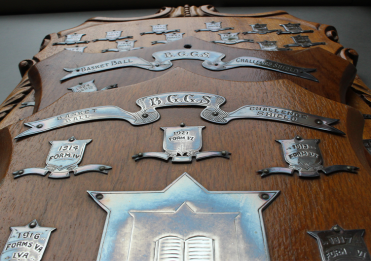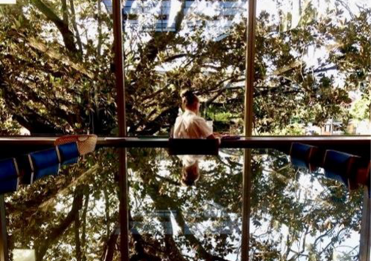We have a little-known ‘artifact’ at the School. It is green and it grows. It happens to be quintessentially Australian. What is not widely known is that it can also be found in India. In a strange sort of way, it is connected to Latin, yet is only six years old. It is associated deeply with learning and has involved the active participation of both Year 7 and 8 House Groups. What could it be? It is our grove of ‘learning’ trees at Rangakarra. The chosen species was Eucalyptus paniculate (ironbarks) to match the existing species of gum trees native to the area.
To understand how the learning tree concept came into existence and what it means, a trip back to 2015 is required. 2015 was an important year in the history of the School. It witnessed the arrival of our first cohort of Year 7 students. This was the first addition of a cohort to secondary schooling in Queensland since 1964. The campus was abuzz with a double cohort of new students—Year 7 and Year 8. Both cohorts have now graduated. Their learning environment was indeed complicated. One cohort would be the last to graduate under the QCS/OP model and one would be the first to graduate under the QCE/ATAR model. It certainly was a time of endings and beginnings.
Our Year 7 Philosophy of Learning course has been designed to help our students traverse this complexity with a focus on grit, mindset theory, personal bests, mistakes as magic, as well as elements of brain science. Such a focus helps to lay solid foundations for a six-year BGGS experience. The question we were asking ourselves in 2014 was: how could we combine the essential messages of our Philosophy of Learning course with the magic of Rangakarra? From this thinking, our learning tree concept emerged. The metaphor is powerful as it captures the energy resulting from learning both starkly and profoundly. We wanted to create a beautiful grove of trees that would be a magnet to visitors to our Rangakarra campus.
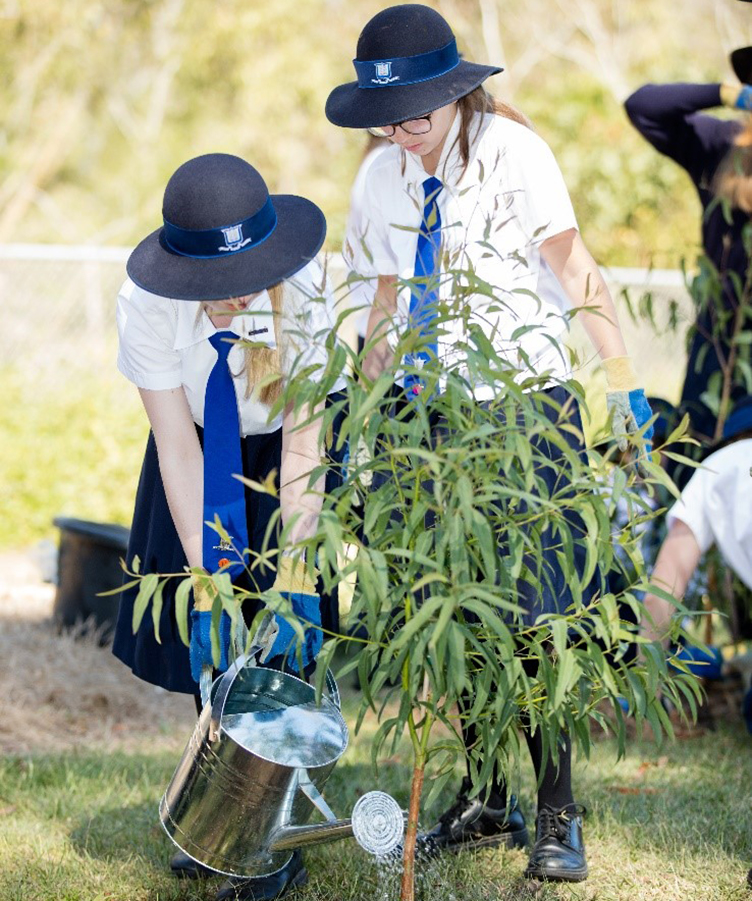
2020 Planting
Why focus on learning? Learning today is probably more complex than ever before. There are many factors at play. Three are worthy of elaboration. Firstly, educators today have a much better understanding of teaching and learning. Secondly, access to information is instantaneous, especially access to adult information. Textbooks are still written but have secondary importance compared with yesteryear. Thirdly, the constancy of disruptive distraction is profound and is guaranteed to confound. We also know that slow learning is just as important as the immediacy and the incessant demands of the digital world. Planting trees to represent this concept of slow learning and the gift of reasoned conclusion seemed especially appropriate on so many levels.
The Rangakarra Recreational and Environmental Education Centre was officially opened 23 May, 2015. It was a very special day. Brisbane was at its beautiful best. The sky was a crystal-clear blue and the fields an immaculate expanse of green. There is something very special about this space. It’s as if the blue and green combine, with the sounds of silence, to create their own ethereal embrace. It is very difficult not to think of our First Nations people and their concept of sacred space when experiencing such sensory richness.
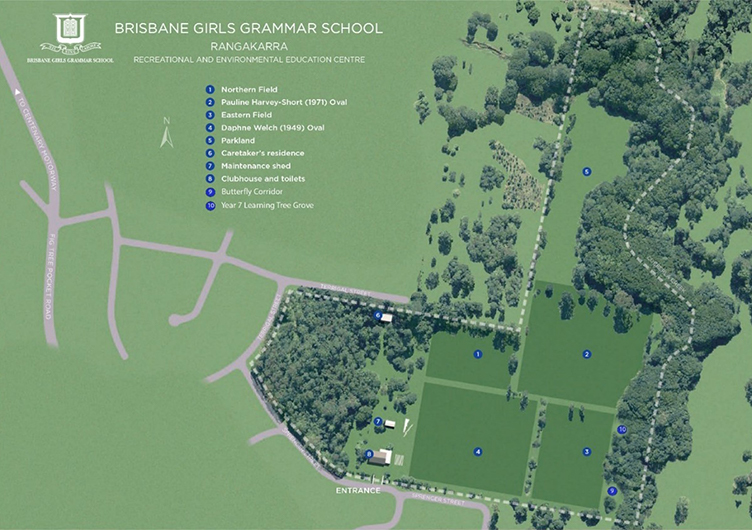
Map of Rangakarra marking the Year 7 Learning Tree Grove
The Rangakarra Opening Ceremony saw the planting of learning trees, the Eucalyptus paniculate (ironbarks), onsite. Both Year 7 and 8 House Groups planted these saplings as living embodiments of the growth mindset concept. Each year since, Year 7 House Group Captains made their way to the beauty of Rangakarra to plant their eucalypts. The weather and the magic of the campus never disappointed. Little did Professor Carol Dweck know that this would be one of the outcomes of her fixed/growth mindset writing. This tradition continued until 2020—the year our first Year 7 class graduated as seniors.
Our grove of saplings was tenderly nurtured until they could grow independently. This sounds so much like the learning journey. These small saplings have now grown into a thriving reminder of a special time in the School’s history. They will continue to mature as the seasons come and go.
Metaphor is powerful. The imagery of growth and hope in the future—much like the personal journey upon which each Grammar girl embarks—is obvious in the symbol of these trees. May this ‘artefact’ become an enduring monument that will grow strong and tall, representing the majesty and vitality of lives enriched by learning.
Dr Bruce Addison
Deputy Principal (Academic)

The planting with Anna McArthur-Dowty (2015), Ms Euler, Ms Jameson, Josefine Ganko (2015) and Madeleine Gandhi (2015)
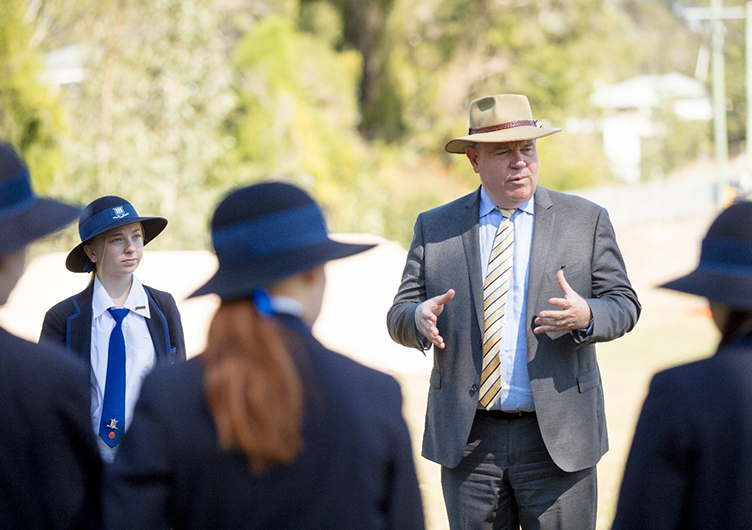
Dr Addison with the 2020 Year 7s at the Learning Tree Grove
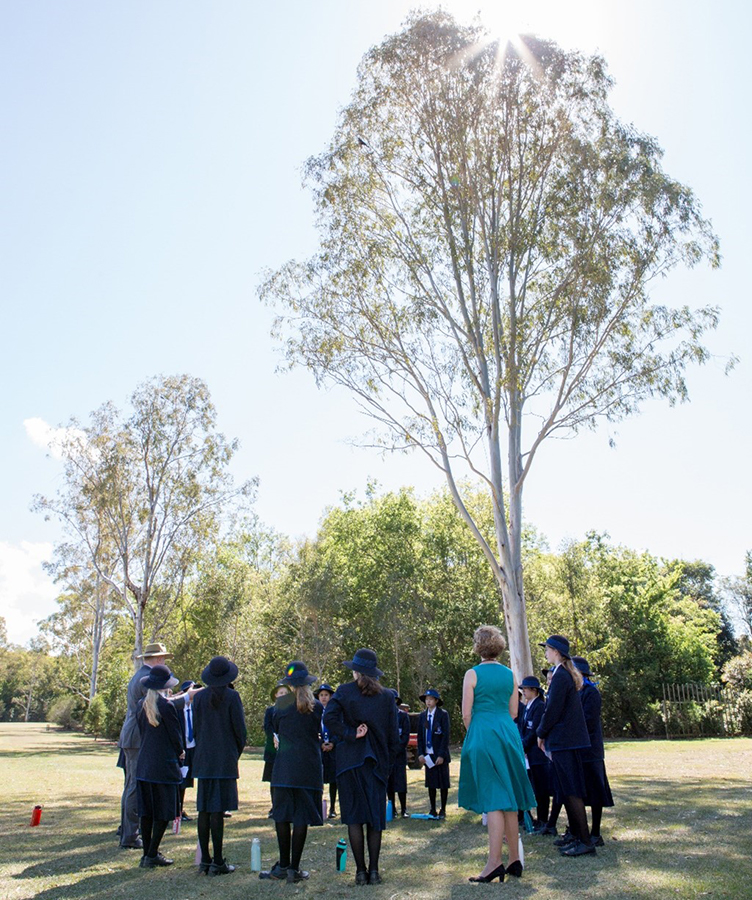
2020 Year 7 Learning Tree Grove


